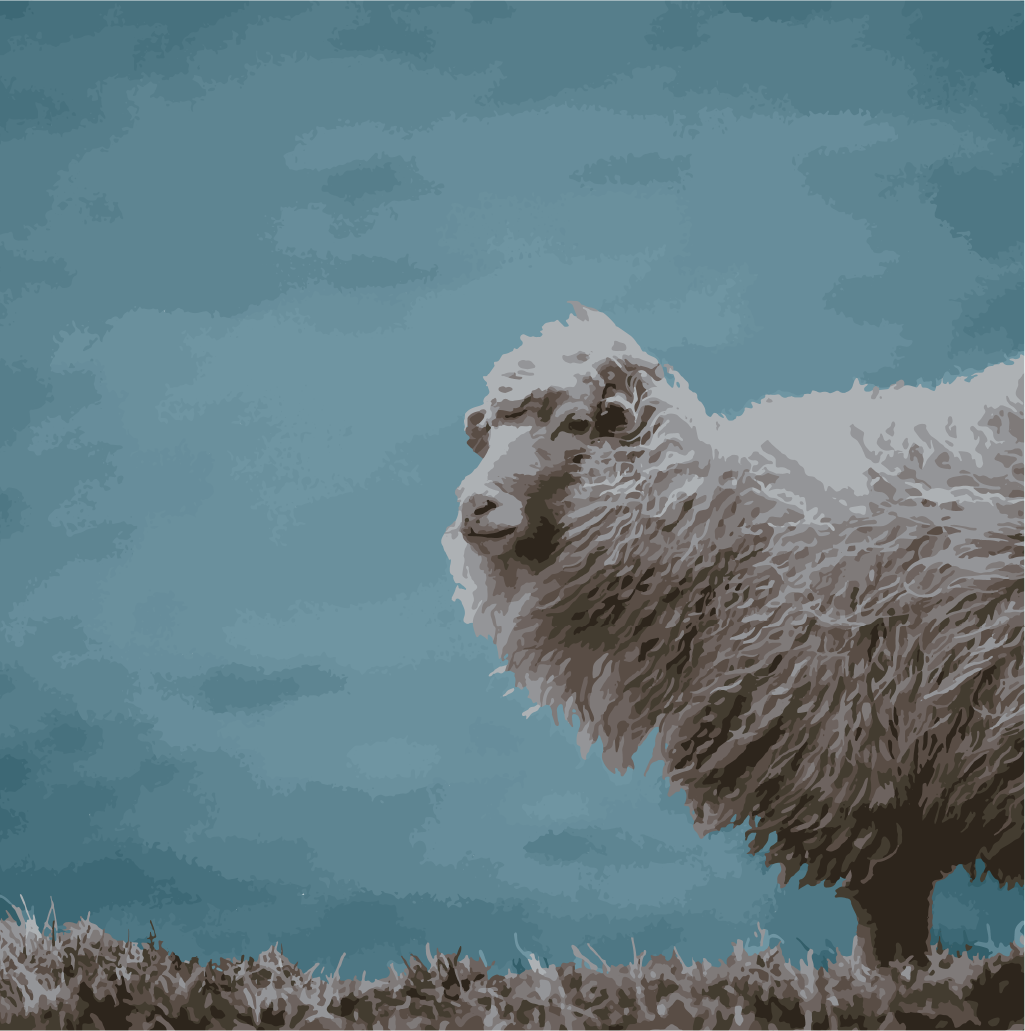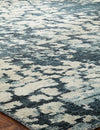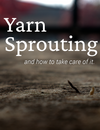
Rug shopping can be difficult when the textile comes in a colorful assortment of materials, all being so similar, but so completely different. In this handy guide we hope to distinguish the makings of the weave, the tips are in no particular order but equally share a part in defining a rug's beautiful material.
5. The Materials That Define Rugs
There is a surprising lack of knowledge when it comes to what rugs are made out of, so we're going to keep it simple. Here's a breakdown of the most common rug materials:
Wool

The number one king of all rug materials is, without a doubt, wool! Shaved from sheep, wool is a great resource that is known as one of the toughest natural fibers. Being naturally fire retardant and stain resistant, with proper care, a 100% wool rug can last over 30 years at least. Read more about the beauty of wool in our other post "Why Wool?"!
Photo Credit: Annie Spratt
Silk

Silk is the strongest natural fiber ever created, going back to 3000 BC, this material was but the stuff of royalty. Nowadays, silk is woven into rugs to create the softest and most legendary textile to ever exist. Throw in its incredible insulation abilities and resistance to deformation and you get the perfect rug that fulfills all of its roles.
Bamboo Silk

Being the less appreciated cousin to silk, Bamboo silk is still an amazing fiber. Created by using renewable bamboo, this material rides the coat tails of pure silk in terms of durability and softness. This is a great alternative and is actually widely used in the weave of rugs, being both practical and enjoyable.
Synthetic Fiber (Polyester, Polypropylene)

Man-made fibers will always be found on machine made rugs, and very rarely on tufted rugs (shags). There's a reason for this, synthetic fibers are very affordable and hand made weavers always prefer wool. These fibers don't share the same qualities of wool and silk and are pretty much used to have a rug in a room, without the benefits a natural rug brings. They can shed and deteriorate at a rapid rate, most lasting no longer than a couple years in high traffic areas! If you are in need of a splash of color and don't mind replacing your rug, machine made synthetic fibers are a practical option. If not, always look for discounted and lower price point wool rugs.
Jute & Hemp

These lesser used materials are invited into the weave of a rug for their unique texture. They bring along a certain roughness that accentuates the softness of the wool and/or silk that's perfect for people who love to feel (everyone). Like balancing a culinary dish, jute & hemp would be the salt to a rather sweet meal, letting you appreciate the texture beneath you feet to a grandiose level.
4. How You Want It To Feel
What do you feel in your mind when you think of the words silk, wool and jute? Cloud-like? Rough? Velvety? Deciding where you sit on the spectrum of feel is a fine way to narrow down your options!
Soft
For those of you that desire a cloud in your room.
Silk
The absolute softest material available for your rug is silk. Your hands and feet will slide across it like butter and its natural insulation will keep it warm in the winter, cool in the summer. Available in pretty much every style, silk is an incredibly satisfying fiber that is will become your new obsession.
Bamboo Silk
Considered a step down from silk, the lavish bamboo variant still has no issues mesmerizing you with its delicate and creamy texture. Some believe silk is too slippery and prefer the rather well balanced touch of bamboo silk, being the perfect ratio of velvety resistance. If you desire an incredibly cloud like material that glistens in the light, bamboo silk is your best bet!
Middle Ground
For a well rounded experience.
Synthetic (Polyester, Polypropylene)
The texture of synthetic fibers sits right down the middle of the spectrum of feel. They have a sort of plastic feel, which isn't unpleasant, but does have a bit to be desired. They are great for that everyday touch that brings contrast to your carpet or couch's more rugged material.
Wool
The feel of wool really comes down to the quality of the source material and knotting technique the weaver used. Wool is all over the place in terms of its touch, some being ultra soft and some rather rough, so we believe it averages out to the middle ground. Unlike silk's singular origin of silkworms, wool is harvested from a variety of breeds that all differ in texture. Some softer, some coarser, even the location of where the wool was cut makes an impact. The chest is highly regarded as the silkiest area because it exists in indirect sunlight and produces the most oil. When buying a rug, wool is almost guaranteed to be woven in (I mean, it is the number one material), so keep in mind that the textures will differ. Asking your rug expert the origin, quality, and pile of the weave is a fantastic way to learn more about the piece of art you are purchasing!
Rough
For a lesson in texture.
Hemp & Jute
These materials have rather similar feels, very coarse and rugged. Used a lot in Sisal rugs, hemp and jute are the perfect fiber for outdoor rugs. They feel almost like rope and are weaved in with wool and silk to add unique textures, defining your rug from all the others. Pick this material if you need durability or a retreat from solace.
3. The Quality of the Weave
When shopping for a rug, never assume that each rug is created equal. A lot of factors are in play from the knotting technique, material origins and weaver's skill that define each rug you see. Even machine made rugs differ from one another, their origin and synthetic material of choice play a huge role in how long your rug will last and what you can expect out of your purchase.
How Do I Stop Shedding?
- Go with the highest quality materials. There's a reason why rugs are priced higher than others, it all comes down to what goes in it and how well it's weaved. A well woven, high quality wool will treat you with zero shedding, a trademark of the more expensive hand woven rugs. There's not some special anti-shed gimmick or anything, only great wool that truly makes that difference.
- Wait it out. A lower quality of wool will inevitably shed, but it's hardly permanent. Deal with it for 3 months are so and usually the shedding will slow to a halt. Some people think the shedding will make their rug bald, but this is the farthest from the truth!
2. Cleaning Expectations
By now, your knowledge of rugs is up there with the best of them. However, there is no point in owning a rug unless you know how to clean a rug! For a deeper guide please consult our post "Cleaning Tips", for now let's dive into the basics:
How Often Do I Need to Clean My Rug?
Household Cleaning : Once a week with a vacuum. Do not use the beater bar!! It will harm your rug and usually ends with professional repairs. A disabled or raised bar is fine, or even better use the handheld suction attachment to surface clean.
Professional Cleaning : Every 5 years or so, we offer cleaning at our Seattle and Bellevue locations, give us a call or send an email for more information. This type of cleaning will restore your rugs colors and breath life back in to the wool. Pet stains should be professionally cleaned.
Do I Need A Pad?
Padding is safety feature that we recommend pairing with every rug. There are options for both carpet and hardwood, making choosing a pad as simple as letting us know your type of flooring. A pad not only keeps you, your rug and your furniture from slipping around, but doubles as comfort padding adding even more softness to your room.
1. Your Price Point
So you have narrowed down all your options to fit everything you desire. It's now time to get a little overview of the price points of each option available to formulate your decisions! Here's a breakdown:
Machine Made - $
Machine made rugs are the cheapest options available for your area rug. They are mass produced and usually use cheaper materials to keep their prices low and competitive. Popular brands include Couristan and Karastan (Specialize in wool)
| Material | Polyester, Polypropylene, Viscose, Nylon, Wool |
|---|---|
| Notable Origin | Belgium, India, Turkey |
| Lifetime | A Few Years |
| Purpose | Great for introducing color to a room for a low price. |
Tufted - $$
Tufted rugs are pretty inventive, they are a hybrid between machine and hand made. Using a tufting gun, a technician punches yarn into canvas, tracing a pattern to build the rug. These are almost always made with wool, and are a great entry point into the rug world if you don't want to invest in anything handmade.
| Material | Wool, Bamboo Silk |
|---|---|
| Notable Origin | Belgium, India |
| Lifetime | A Few Years |
| Purpose | Entry to wool, Great for those who love buying different rugs to keep a room looking different. |
Hand Made - $$$
Hand made rugs are the heart and soul of the rug world. They are created by master weavers with art, as well as functionality in mind. At Palace Rug Gallery, we specialize in every kind of hand made rugs and our designers house extensive knowledge of the craft. If you desire the best of the best, hand made is the pinnacle of rug making.
www.bellevuerugcleaning.com , www.carpetsseattle.com , www.cleaningrugseattle.com , www.rugcleaningbellevue.com , rugrepairseattle.com
www.bellevuerugs.com
| Material | Wool, Silk, Bamboo Silk, Hemp, Jute |
|---|---|
| Notable Origins | Iran, India, Tibet, Nepal, Pakistan, Afghanistan |
| Lifetime | 30 years, minimum |
| Purpose | No shedding, luxury, work of art |
| Unique Features | Many are one-of-a-kind, holding excellent resale value |


